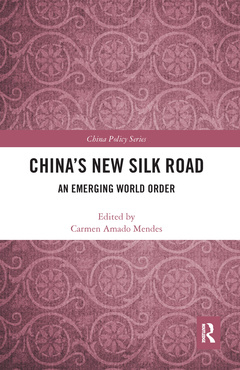China's New Silk Road An Emerging World Order China Policy Series
Coordonnateur : Mendes Carmen Amado

Much is being written about China?s new 'One Belt, One Road' initiative, but much of the writing focuses on China itself, on the destinations of the road ? Europe and the Middle East ? or on the countries through which the road passes, such as Central Asia. This book takes a different approach, assessing the views of East Asian and other countries on the Belt and Road Initiative, both from a transnational and multidisciplinary perspective. The book considers international visions and limitations of the New Silk Road as a new paradigm, explores economic and trade aspects, including infrastructure networks, financial mechanisms, and the likely impact for other countries and regions, and analyses the likely implications for regional and trans-regional cooperation and competition. Western and Asian regional perspectives on the New Silk Road, including from India, Pakistan, Southeast Asia and Japan are considered throughout the book.
Introduction: China’s New Silk Road
SECTION 1: The General Context
Chapter 1 – New Paradigms for the New Silk Road
Chapter 2 – Building a Community of Shared Destiny: The Belt and Road Initiative in the Political Speeches of Xi Jinping
Chapter 3 – Whose Silk Road? The Chinese, U.S., European Union and Russian Strategic Projects for Regional Integration in Central Asia
Chapter 4 – Sustainability Implications of the New Silk Road: Environmental and Social Planning
SECTION 2: The Economic Dimension,
Chapter 5 – The Political Economy of New Multilateral Development Bank and Reserve Arrangements in East Asia
Chapter 6 – The New Silk Road: Perspectives for EU-China Economic Cooperation
Chapter 7 – The China-Pakistan Economic Corridor: Lessons for the New Silk Road
Chapter 8 – Sino-Pakistani Axis of Cooperation in China´s New Silk Road
SECTION 3: The Strategic Dimension
Chapter 9 – The Role of Local Goverments in the New Silk Road
Chapter 10 – The Maritime Silk Road, Viewed from the South
Chapter 11 – Locating China’s Maritime Silk Road in the context of the South China Sea disputes
Carmen Amado Mendes is Professor of International Relations at the University of Coimbra, Portugal.
Date de parution : 06-2020
15.6x23.4 cm
Date de parution : 10-2018
15.6x23.4 cm
Mots-clés :
China Pakistan Economic Corridor; CPEC; century; Chen Zhimin; maritime; Chinese Government; aiib; St Century Maritime Silk Road; initiative; Maritime Silk Road; pakistan; Silk Road Economic Belt; economic; Silk Road; corridor; OBOR Initiative; belt; Jointly Building Silk Road Economic; obor; Building Silk Road Economic Belt; jinping; China’s BRI; Sean Golden; BRI Project; Beatrice Gallelli; Patrick Heinrich; Maritime Silk Road Initiative; Paulo Duarte; CPEC Project; Daniele Brombal; Xi Jinping; Werner Pascha; Xi Jinping’s Visit; Fernanda Ilhéu; Building Silk Road Economic; Mario Esteban; Preference Multiplier; Jorge Tavares da Silva; Giant Clam Shells; Dominik Mierzejewski; Central Government; Roger Greatrex; Eurasian Economic Union; Edyta Roszko; EEU; Young Man



